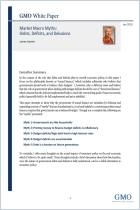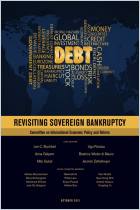
Report
Optimal Level of Government Debt
Matching Wealth Inequality and the Financial Sector
ECB,
2014
Read or listen offline
自动生成的音频
1×
自动生成的音频
Recommendation
Debate over the impact of government debt on an economy continues in the wake of the Great Recession. Public-sector borrowing can fund fiscal expansions that are designed to drive consumption and growth, but that debt also can dampen private-sector investment and harm growth in the long run. Economist Edgar Vogel of the European Central Bank makes an important new contribution to the research on ideal sovereign debt levels. getAbstract recommends his report, despite its rather dense and theoretical delivery, for its realistic modeling of the effects of government debt on economic welfare.
Take-Aways
About the Author
Edgar Vogel is an economist at the European Central Bank.
Learners who read this summary also read
Report
Article
Book


















Comment on this summary or 开始讨论